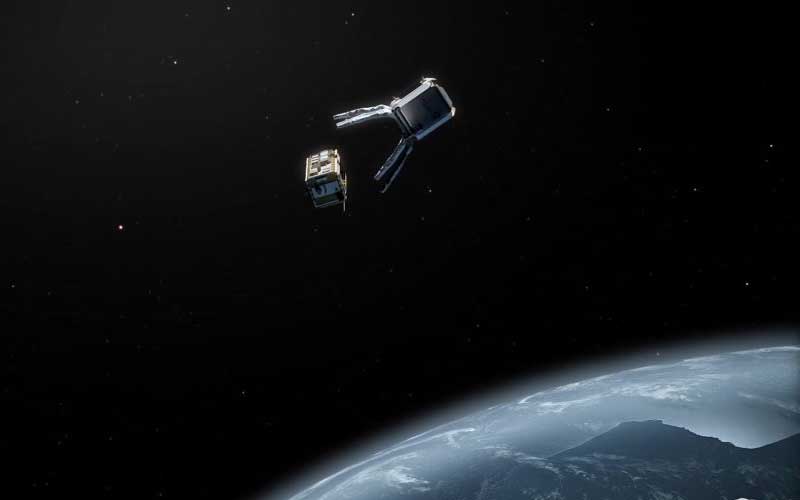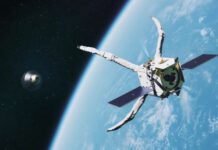
A space debris removal mission being developed by Swiss startup ClearSpace has passed a pair of milestones as part of its environmental test campaign.
ClearSpace-1 is an active debris removal mission that aims to capture and deorbit a Vega payload adapter that was launched in 2013 carrying three satellites. To capture its 112-kilogram target, the spacecraft will employ four robotic arms. The spacecraft, with its captured payload adapter secured, will then be deorbited with both burning up in the atmosphere.
The Swiss startup announced earlier today that the ClearSpace-1 spacecraft had completed two major milestones as part of its environmental test campaign, namely, the completion of the vibration and thermal vacuum chamber tests. These tests are vital to ensure that the spacecraft is able to stand up to the conditions during its launch and operation once it is deployed into orbit.
“We successfully passed harsh environment vibration and thermal vacuum tests thanks to this amazing collaboration with the broader team,” explained ClearSpace CEO Luc Piguet. The testing was conducted at the Beyond Gravity test facilities, with Austria’s FOTEC providing additional support.
In May 2023, ClearSpace signed a contract with Arianespace to launch the ClearSpace-1 mission aboard a Vega C flight in the second half of 2026. Following an agreement that was reached during the Space Summit in Seville late last year, Avio will be taking over the marketing and management of the launch vehicle. As a result, it’s likely by the time the launch comes around, the mission will be in the hands of the Italian rocket builder.
Once launched, the ClearSpace-1 spacecraft will be deployed into a sun-synchronous orbit for commissioning, after which it will undergo a battery of tests. It will then be raised into the target orbit of approximately 800 by 660 kilometres. ClearSpace-1 will then begin operations to target, capture, and deorbit the Vega payload adapter.



